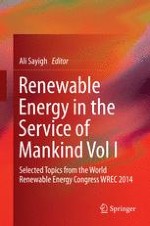2015 | OriginalPaper | Chapter
48. Building Energy Index and Students’ Perceived Performance in Public University Buildings
Authors : S. N. N. Syed Yahya, A. R. M. Ariffin, Muhammad Azzam Ismail
Published in: Renewable Energy in the Service of Mankind Vol I
Publisher: Springer International Publishing
Activate our intelligent search to find suitable subject content or patents.
Select sections of text to find matching patents with Artificial Intelligence. powered by
Select sections of text to find additional relevant content using AI-assisted search. powered by
